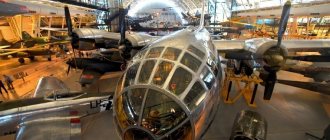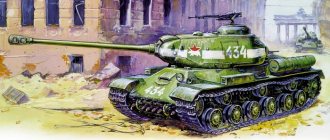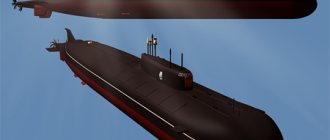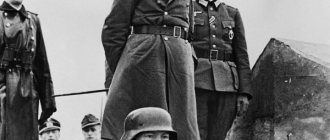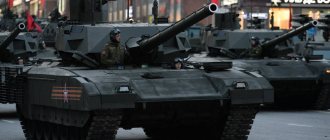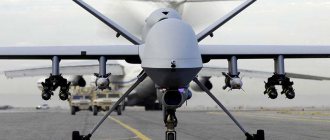Currently, the main areas of operation of robots are considered to be NBC protection, various types of reconnaissance, fighting fires, mines and explosive devices, transporting people (including the evacuation of the wounded) and cargo. The development of combat robots is still somewhat behind the development of auxiliary machines, which, however, is quite natural. At the same time, already created combat robots are mainly used to solve relatively simple tasks (primarily for the protection of stationary objects), and not for use on the combined arms battlefield.
As in the case of UAVs, for combat ground robots the problem of ensuring completely reliable communication with the operator, or having an autonomous action program that guarantees that the robot does not go out of control, has not been solved. Moreover, it is more difficult to remotely control a ground robot than a UAV (due to the presence of folds in the terrain and a much shorter line-of-sight range).
From the life of robots
Attempts to create remote-controlled combat vehicles in a number of countries (including the USSR) were carried out in the pre-war period, but did not bring real success. This process resumed in the 1960s. At the same time, the appearance of robots in the military began only in the 21st century, and the volumes of their supplies are completely incomparable (several orders of magnitude lower) than the volume of supplies of UAVs (and even an order of magnitude lower than the supply of unmanned marine systems). This is explained by the control problems mentioned above, as well as by the fact that from an economic point of view, ground robots are much less profitable than UAVs: they are not so much cheaper than classic ground military equipment than a UAV is cheaper (many times) than an airplane or helicopter.
© dvidshub.net During the wars in Iraq and Afghanistan, the US Armed Forces received several thousand robotic deminers.
During the wars in Iraq and Afghanistan, the US Armed Forces received several thousand sapper/reconnaissance robots, of which up to 10% were lost. The most popular models were the small-sized and fairly simple in design robots “Markbot” and “Packbot”. The latter, in addition to searching for mines, could detect sniper positions.
A further development of the Packbot was the much larger and heavier Warrior-700/710 vehicle. Having a mass of 130-160 kg, it is capable of transporting the same “Packboat”. "Warrior" can make passages in minefields and wire fences, climb ladders, has a manipulator arm, and can carry a machine gun.
The Talon robot weighing up to 70 kg is widely used, which, in addition to reconnaissance equipment, can carry a machine gun and an automatic grenade launcher. Based on Talon, a MAARS robot weighing up to 170 kg and having a powerful manipulator was created. The ANDROS mine action robot has similar dimensions. There are also several other types of small-sized robots in service - “Recon Scout”, “Fest Look”, “Spy Robot”, “Dragon Runner” weighing from 1.3 to 9 kg. Their task is to reconnaissance the area (including in urban areas) using video and IR cameras. "Dragon Runner" is also equipped with a manipulator. The main disadvantage of all these robots is the short range at which they can be controlled (and received information from them) - less than a kilometer.
© navy.mil
The Talon robot weighing up to 70 kg is widely used, which, in addition to reconnaissance equipment, can carry a machine gun and an automatic grenade launcher.
Lockheed Martin, USA
The company was formed in March 1995 as a result of the merger of two corporations - Lockheed Corporation and Martin Marietta Corporation. Now it is the world's largest supplier of military equipment in terms of the amount of contracts concluded (based on the results of at least 2016, 2015 and 2014). Develops and manufactures products for the aerospace, aviation, navy, security and technology sectors. The company has received the Collier Trophy for excellence in aeronautics six times.
MULE
- a three-axis robotic platform on the basis of which transport, engineering, combat and reconnaissance robots are built. The transport version designated XM1217 is equipped with a module that can accommodate up to 1090 kg of cargo. It is also designed for evacuating the wounded from the battlefield, transporting ammunition and transporting personnel. If necessary, it can serve as shelter - the robot significantly reduces ground clearance and protects from shelling. The XM1218 robot variant is designed to detect and neutralize mines, as well as for reconnaissance. The combat version of the ARV-A is essentially a light tank with additional armor shielding on the top of the chassis. It weighs 9.3 tons and is equipped with a Mk 44 type cannon of 30 mm caliber, as well as an M240 machine gun of 7.62 mm caliber. Additionally, you can install an XM307 ACSW automatic grenade launcher for 25x59 mm grenades, as well as an anti-tank missile system. The ARVA-L modification is additionally equipped with a retractable periscopic viewing tube, equipment for radiochemical and bacteriological reconnaissance, smoke jammers and a mine clearing set.
Universal platforms
Another direction in the development of ground robots is the creation of unmanned vehicles, which, as a rule, can become universal platforms for placing various equipment and weapons. Such machines weigh hundreds of kilograms or even several tons.
This raises the question of whether such vehicles should have structural protection (armor). Lack of armor reduces cost and increases mobility, but also dramatically reduces survivability on the battlefield. Its presence, accordingly, creates a completely opposite situation. Finding a compromise solution is quite difficult.
In the USA, transport and multi-purpose robotic vehicles “Crasher”, APD, SMSS, “Gladiator”, “Camel”, “Mule”, MUTT, as well as “Titan” (together with Estonia) have been created. None of them have been brought to mass production yet. The biomorphic walking robots “Big Dog” and “Alpha Dog” have become widely known. They were supposed to be used to carry cargo in the interests of infantry and MTR units. However, as it turned out, the infantry does not need such vehicles (since it has infantry fighting vehicles, armored personnel carriers and cars), and for the MTR the robot turned out to be too noisy and clumsy. Therefore the program was closed.
An anthropomorphic robot “Atlas” was also created. His height is 188 cm, shoulder width is 76 cm, weight is about 150 kg. Obviously, this development is purely experimental in nature and is unlikely to receive practical application in the foreseeable future. The Black Knight, which is a 10-ton “mini-tank” (more precisely, a “mini-infantry fighting vehicle” M2 “Bradley”), equipped with a 25-mm or 30-mm cannon and a coaxial machine gun, should be purely combat-oriented. The Ripso M5 robot was created using a similar concept. It also has a mass of 10 tons, a speed of up to 65 km/h, and can carry small-caliber guns, machine guns, Javelin ATGMs, and reconnaissance UAVs.
©baesystems.com
In its pure combat form, the Black Knight “mini-tank” should be equipped with a 25-mm or 30-mm cannon and a coaxial machine gun.
Combat robots are being developed quite actively in Israel. First of all, we are talking about patrol cars designed to protect various objects or borders. The Sea Shut and Segev robots were created here, as well as the small-sized reconnaissance and engineering robots MTGR, DOGO, TIGR, IRIS, and the transport PROBOT.
Of note is the 12-kilogram Viper combat robot, armed with a specially created version of the Uzi submachine gun with a laser sight. He is capable of operating inside buildings, including climbing stairs. Another combat robot is the Gardium.
An unmanned Ture-X platform weighing 12 tons with a payload weight of up to 3 tons has been created in Estonia. On its basis, it is possible to create a family of combat vehicles equipped with various weapons and equipment.
In France, the Cobra and Nerva families of light reconnaissance robots have been created; these machines can interact with UAVs, transmitting information to the operator through them. In Japan, the development of robots has intensified significantly in connection with the accident at the Fukushima nuclear power plant. This is how the Helios and Queens reconnaissance robots were born, as well as the Kuratas combat robot, equipped with two machine guns and two manipulators.
The RCLCV combat robot, which can be equipped with machine guns and/or RPGs, was developed in Taiwan. The Republic of Korea has created a stationary combat robot (automatic turret) “Samsung SGR-1” to guard the border with the DPRK. China has created reconnaissance and transport robots “Linxi”, “Raptor”, “Snow”, “Leopard-10”, “Bot”, “Sharp Claw” (very close in appearance to the American MAARS).
You can especially o, which means “Big Dog”. It is built on the same concept of a walking biomorphic apparatus as the American Big Dog of the same name. However, it is unclear whether it has been adopted or will share the fate of its American “colleague.”
© dok-ing.h
The MV-4 mine-resistant vehicle, created in Croatia, turned out to be especially successful.
A number of heavy (weighing several tons) engineering robotic machines were created in Croatia. These are, in particular, the MV-4 and MV-10 mine action vehicles and the MVF-5 fire engine. The first one turned out to be especially successful; it was purchased by the US ground forces under the name M160, and in Russia, the Uran-6 robotic machine was developed on its basis. In addition, based on the MVF-5, the Uran-14 vehicle was created in Russia. In 2022, the Komodo vehicle was demonstrated in Croatia, designed for conducting NBC reconnaissance and solving various engineering tasks, including fire extinguishing and decontamination. The weight of the Komodo is 17 tons, the speed is up to 30 km/h. At the same time, the effective radio control range is only 1.5 km.
In addition to these two "Urans" of Croatian origin, Russia has developed universal medium-sized robots MRK-27, "Soratnik", "Platform-M", capable of carrying machine guns, AGS, RPG, RPO, ATGM (MRK-27 and "Platform-M" "can also be used in a mine action version). Heavier machines for the same purpose are Nerekhta and Uran-9. Based on the concept of a biomorphic robot (similar to the American and Chinese “Big Dogs”), the “Lynx” robot is being developed.
Reconnaissance and engineering vehicles include “Kursant”, “Varan”, RTK-05, “Tornado”, “Vepr”, “Grasshopper”, “Mongoose”. “Uran-6” and “Uran-9” were tested during the fighting in Syria, and these tests cannot be called completely successful. Nevertheless, it is based on the results of these tests that the Uraniums, after appropriate modifications, will go into service with the RF Armed Forces. “Uran-6” is like a sapper vehicle, the 12-ton “Uran-9” is like a robotic combat complex, armed with a 30 mm cannon, a 7.62 mm machine gun, several Ataka ATGMs and Shmel-M flamethrowers. The 7-ton combat robot "Soratnik" is expected to have approximately the same set of weapons (but with "Cornet" instead of "Attack").
© Vladimir Korobitsyn/zvezdaweekly.ru
The Uran-9 combat robot, armed with a 30-mm cannon, a 7.62-mm machine gun, several Ataka ATGMs and Shmel-M flamethrowers, was tested during combat operations in Syria.
Belarus has developed the Adunok combat robot on the BRDM-2 chassis and the Mantis small-sized combat robot. A number of robots (“Bars”, “Laska”, “Hunter”, “Piranha”, “Phantom”) are being created in Ukraine, but they are unlikely to reach mass production, even if they turn out to be successful.
Northrop Grumman Corporation, USA
Northrop Grumman was formed in 1994 when two large corporations, Northrop Corporation and Grumman Corporation, merged into one. This is one of the largest US companies working for the American military-industrial complex and foreign customers. Develops and produces battleships, aircraft carriers, aircraft (attack aircraft, fighters, bombers), missile defense systems, navigation systems, as well as electronics for the space and medical industries. Northrop Grumman has a subsidiary called Remotec, which produces military robots.
ANDROS
- a whole series of robots whose main purpose is to clear explosive devices and shells. The basic F6-A weighs 220 kg and is equipped with four color cameras. And its predecessor, the F-5 robot, was used to kill a criminal who attacked police officers in Texas in July 2016. The MarkV-A1 has a similar design, but is slightly larger than the F6-A - it weighs 358 kg; equipped with a water cannon and, if necessary, a shotgun. The largest in the ANDROS family is the Wolverine mine-sapping robot, which weighs 367.4 kg. And the smallest and newest in the ANDROS line is the HD-1 robot, which weighs only 90 kg; this robotic minesweeper has been successfully used by the Israeli engineering forces.
Wheelbarrow Mk.9
is another minesweeper robot, but with a different chassis type from the ANDROS series robots. The Wheelbarrow Mk.9 has a modified and noticeably narrower track drive. Its dimensions are 135x63x124 cm. Weighing 330-350 kg, it can move at speeds of up to 5 km/h and work autonomously for up to three hours. The manipulator has seven degrees of freedom. When fully extended, it is capable of moving loads weighing up to 20 kg, and when assembled - up to 150 kg. The robot is equipped with a set of cameras - up to 10 pieces, depending on the complexity of the task being performed.
First there were tanks...
In the USA and USSR/Russia, attempts have been and are being made to create robots (both engineering and combat) based on tanks (M60, Abrams, T-72), but it is difficult to call them successful. Apparently, Russia has come closest to the goal, where the Sturm combat robot was created on the chassis of the T-72B3 tank. It will be armed with a shortened (for urban combat) 125-mm cannon, as well as, in different versions, a 30-mm cannon, Shmel flamethrowers and even 220-mm NURS (obviously, similar to the TOS-1 flamethrower MLRS) . Perhaps a robotic version of even the latest T-14 Armata tank will be created. On the BMP-3 chassis, a combat robot “Udar” is being created with a 30-mm cannon, a Kornet anti-tank missile system and its own helicopter-type reconnaissance UAV. Naturally, a robot created on the basis of an infantry fighting vehicle will have much lower security than a tank.
It should be noted here that in this case the issue of maintaining stable communication with robot tanks, and over considerable distances, is especially important, since if the range of such communication does not exceed 1-2 km, creating a robot tank loses its meaning. In addition, for such large combat robots in terms of mass and dimensions, issues of maintenance and transportation over long distances will become a rather serious separate problem.
Also in Russia, a robotic version of the self-propelled gun 2S35 “Coalition” is being created. How expedient this is is a controversial question. Robot soldiers and robot tanks are needed in order to exclude the participation of people in ground contact combat, which implies the highest losses of all types of modern combat operations; robot sappers are needed so that a human sapper does not have to “make a mistake once.” Artillery almost never engages in contact battles, so it is not a fact that artillerymen need to be replaced with mechanical systems.
© mil.ru
A robotic version of the self-propelled gun 2S35 “Coalition” is being created in Russia.
Most likely, a robotic self-propelled gun will be more expensive than a traditional one, and its use is unlikely to lead to a drastic reduction in human losses. For example, during the two Chechen wars, the Russian army irretrievably lost a total of about 200 tanks and only a little more than 20 self-propelled guns. These figures clearly show which class of equipment is in greater need of robotization.
In fact, if we use the term “robot” completely correctly, none of the above machines is such, since they are all controlled by operators remotely and cannot work autonomously (or are capable of this on an extremely limited scale). However, when creating fully autonomous systems, there is the already mentioned technical problem of the machine getting out of control and the even more serious philosophical and ethical problem of giving the machine the right to kill a person (in fact, this will be a decisive step towards the destruction of humanity). In addition, the problem of group use of ground robots has not yet been solved (which has already been done for UAVs and marine unmanned systems).
Purpose
The Russian Navy plans to use devices of this class not only for mine clearance, but also in search and rescue operations, in particular for searching and inspecting damaged submarines, and for practicing the tasks of providing assistance to an emergency submarine during search and rescue exercises. The device can also be used to install hydroacoustic markers and retrieve objects lost at depth.
A distinctive feature of the Marlin-350 is its mobility and maneuverability. This is a quickly deployable, easy-to-use system, which is important given the strict standards of search and rescue operations.
Children in the city. A schoolgirl from Academichesky came up with a robot sapper Read more
So far exotic
In the medium term, it is planned to create transport and combat robots capable of forming and protecting transport columns. Anthropomorphic and biomorphic robots can be used in various ways - as combat, reconnaissance, transport (especially on rough terrain in the absence of roads).
In the longer term, it is possible to create “personal” robots for each soldier (especially an infantryman or SOF soldier), and then replace people with robots on the battlefield. But to do this, it will be necessary to solve the technical and ethical problems mentioned above. And while the first ones can be solved, the second ones are unlikely.
At the moment, “flying robots” (UAVs) have long become the norm in both the military and civilian spheres. Offshore uncrewed systems are gradually becoming the norm. Ground robots for military purposes still remain exotic (except, perhaps, for engineer vehicles); the vast majority of the samples described above are purely experimental or are used on a very limited scale. There is no doubt, however, that this situation will change quickly, as people are less and less willing to fight and die. In the end, they will all be killed by the robots they created.
How is it controlled?
Commands to the Marlin-350 underwater drone are transmitted via cable. The operator monitors the work on the console, where all the information is received: telemetric data, coordinates of the device, as well as images from video cameras. All this data is displayed on three large displays. The Marlin is controlled by joysticks and can perform complex maneuvers and manipulations underwater. A set of removable manipulators has been prepared for the robot; it is with their help that explosive charges are installed on detected mines.
An underwater robot can be equipped with additional equipment, such as a high-resolution camera, all-round sonar, or manipulators of various designs. The robot also has a winch, which in case of an accident will help return the device to the minesweeper. Compact dimensions and maneuverability allow the device to be used not only on the open sea, but also in ports and cramped bays.
Spearfishing. Russian naval drones will track enemy submarines More details
"Companion"
One of our most recent developments in the field of combat robots. “Soratnik” was developed by the Kalashnikov concern and belongs to the middle class. Capable of performing reconnaissance, patrolling, and barricade missions. “Soratnik” can operate in conjunction with a drone. The maximum target detection range is 2.5 km.
The total weight of the machine with all the bells and whistles can reach 7 tons. Maximum speed is 40 km/h, range of action is up to 10 km.
Armament: Kalashnikov machine gun, heavy machine gun, AG-17A grenade launcher, up to eight Kornet-E ATGMs.
This robot appeared in a recent program about the actions of Special Operations Forces soldiers in Syria (5:20):
